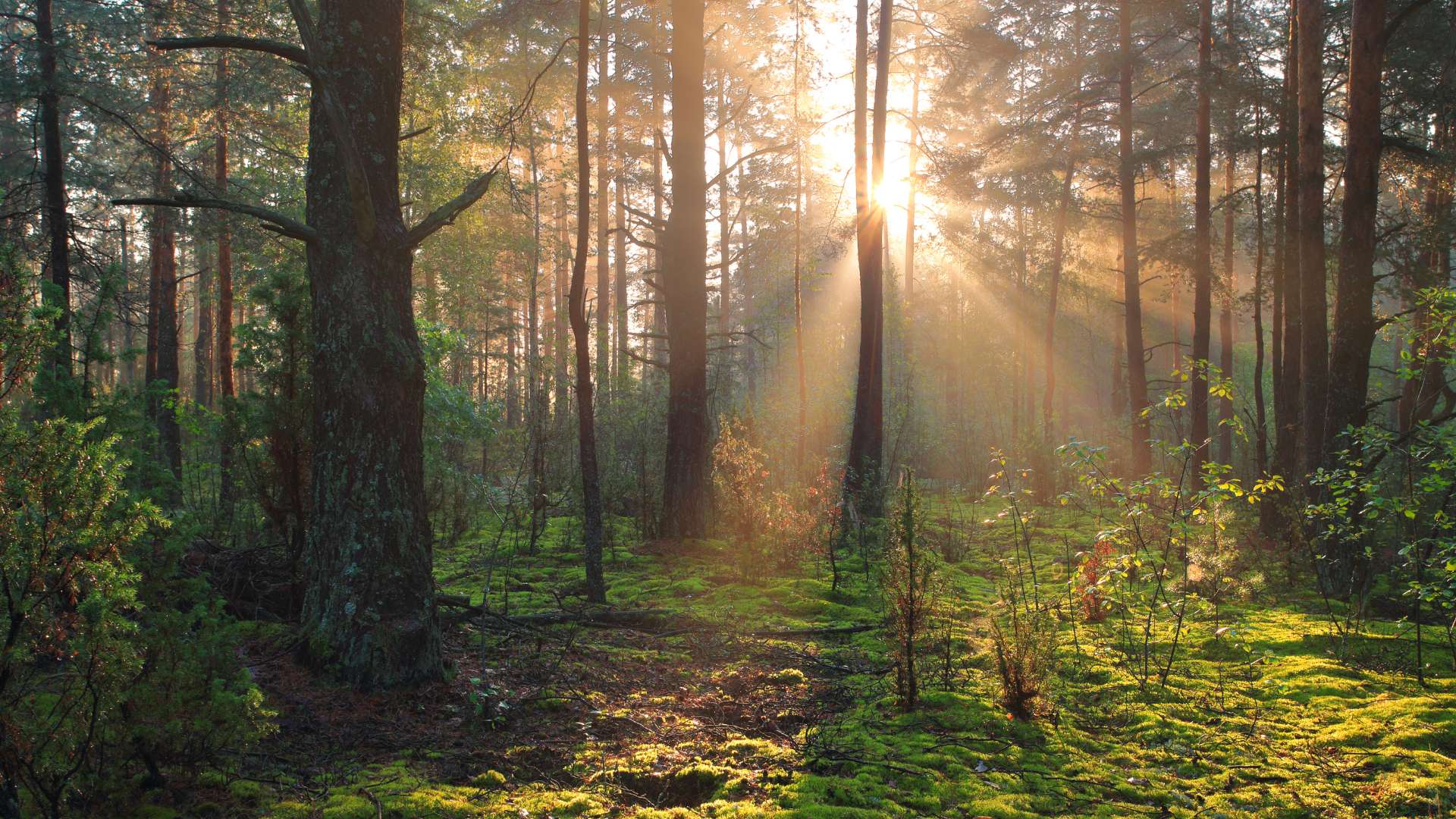Table of Contents
ToggleHave you ever wondered which forests dominate our planet, shaping ecosystems and influencing global climates? Forests are not just sprawling areas of greenery, they are lifelines for biodiversity, homes to countless species, and vital sources of oxygen.
From the dense rainforests of the Amazon to the ancient canopies of the Daintree, the world’s largest forests each have a story to tell. But what makes these forests so unique, and why are they crucial to Earth’s survival?
In this exploration, we delve into the top 10 world biggest forest, uncovering their ecological importance, incredible wildlife, and the pressing need for their conservation. Prepare to journey across continents through nature’s grandest creations.
Why Are Forests Called the “Lungs of the Earth”?
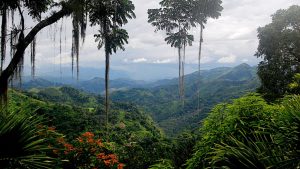
Forests earn the title “Lungs of the Earth” due to their critical role in oxygen production and carbon dioxide absorption. Through photosynthesis, trees and plants convert carbon dioxide into oxygen, supporting life on Earth. The Amazon Rainforest alone contributes about 20% of the world’s oxygen supply.
Moreover, forests act as massive carbon sinks, storing millions of tons of carbon that would otherwise accelerate global warming. They regulate air quality, maintain the Earth’s temperature, and even influence weather patterns globally.
Without forests, the balance of gases in the atmosphere would tilt, affecting life forms. Forests also purify the air by trapping pollutants and fine particles, further underscoring their importance.
While deforestation reduces their ability to perform these functions, conservation and reforestation efforts ensure that forests continue playing this vital role for humanity and the planet’s health.
How Do Forests Contribute to Biodiversity?
Forests are the planet’s richest hubs of biodiversity, housing over 80% of terrestrial species. From towering canopies to rich soil ecosystems, forests provide unique habitats for plants, animals, fungi, and microorganisms.
Rainforests like the Amazon and Congo Basin boast unparalleled species diversity, harboring iconic creatures like jaguars and gorillas. Each layer of the forest, from the emergent trees to the forest floor, supports distinct life forms.
In temperate forests, seasonal changes foster dynamic ecosystems, while boreal forests sustain life in extreme climates. Forests are also critical for migratory species, offering breeding grounds and food. Biodiversity in forests ensures ecological balance, aiding pollination, seed dispersal, and pest control.
However, habitat loss from deforestation threatens this balance, making forest preservation key to maintaining the planet’s biodiversity and ecological health.
What Role Do Forests Play in Mitigating Climate Change?
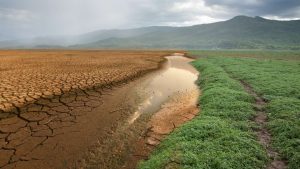
Forests are indispensable allies in the fight against climate change, thanks to their capacity for carbon sequestration. They absorb vast amounts of carbon dioxide during photosynthesis, storing it in their biomass and soil. This process helps mitigate the effects of greenhouse gas emissions.
In tropical rainforests, such as the Amazon, millions of tons of carbon are stored in vegetation. Similarly, boreal forests in the northern hemisphere hold vast carbon reserves in their trees and permafrost.
By regulating atmospheric carbon levels, forests stabilize global temperatures and prevent the escalation of extreme weather conditions. Deforestation disrupts this cycle, releasing stored carbon and exacerbating climate issues.
Protecting forests through sustainable practices, reforestation, and conservation programs is essential to combat rising global temperatures and safeguard the planet’s future climate stability.
How Do Forests Support Indigenous Communities?
Forests are integral to the survival and culture of Indigenous communities, who have lived in harmony with these ecosystems for centuries. They rely on forests for food, medicine, shelter, and spiritual practices, making them vital to their identity and well-being.
The Sundarbans, for example, sustain the livelihoods of their local communities through fishing and honey collection. In the Amazon, Indigenous tribes cultivate a deep connection with the forest, using its resources sustainably while protecting its biodiversity.
Forests also preserve traditional knowledge passed down through generations, much of which contributes to modern conservation and sustainable living practices.
However, deforestation and land grabs threaten Indigenous land rights and their way of life. Empowering these communities through legal protections and recognizing their stewardship is critical for preserving both cultural heritage and forest ecosystems.
What Are the Economic Benefits of Forests?
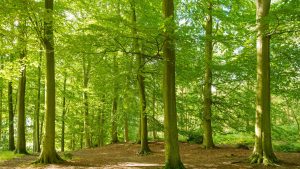
Forests are essential drivers of global and local economies, supporting industries like timber, non-timber products, tourism, and agriculture. Sustainable logging, when practised responsibly, supplies raw materials for the construction, paper, and furniture industries.
Non-timber products, including fruits, nuts, honey, and medicinal plants, generate significant income for forest-dependent communities. Eco-tourism thrives in areas like the Daintree Rainforest and Great Bear Rainforest, offering visitors a chance to explore unique ecosystems while supporting local economies.
Forests also contribute indirectly by protecting watersheds, which ensure water supply for agriculture and industries. However, overexploitation risks degrading their long-term economic value. Balancing resource use with conservation ensures forests continue to provide economic benefits while maintaining their ecological roles.
Why Is Forest Conservation Crucial for Future Generations?
Forest conservation is vital for ensuring a sustainable future. Forests are key to maintaining ecological balance, providing essential resources like clean air, water, and fertile soil. They regulate climate, absorb carbon, and support countless species, including humans.
Forests also serve as natural laboratories, offering opportunities for discovering medicines and technologies. Beyond their utility, they inspire awe and creativity, enriching cultures and traditions worldwide. Without forests, future generations will face increased risks of climate change, biodiversity loss, and resource scarcity.
Conservation ensures that these ecosystems remain intact through measures like reforestation, creating protected areas, and empowering Indigenous communities. By acting today, we safeguard forests as invaluable resources and habitats, securing their benefits for both present and future generations.
Top 10 World Biggest Forest
1. Amazon Rainforest: The World’s Biggest Forest
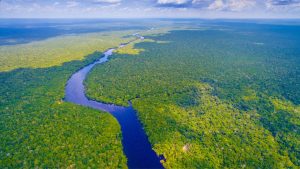
The Amazon Rainforest, recognised as the world’s biggest forest, is an unparalleled natural marvel. Spanning vast stretches of South America, it forms the most extensive tropical rainforest globally and is critical in sustaining Earth’s environmental balance.
Its sprawling greenery houses diverse plant life, from towering trees to rare medicinal flora, creating an intricate ecosystem that supports countless animal species.
The Amazon’s dense canopy forms a unique habitat where sunlight struggles to penetrate, fostering a rich undergrowth teeming with life. As the largest forest on the planet, it serves as a haven for unparalleled biodiversity and remains one of the most studied ecosystems in the world.
The forest’s intricate network of rivers, including the mighty Amazon River, adds another layer of significance, supporting aquatic life and acting as a lifeline for surrounding regions.
Despite its grandeur, the Amazon faces persistent threats, making it a priority for global conservation efforts. Its status as the largest forest also makes it a focal point for sustainable development programs to preserve its unique ecosystems while ensuring long-term environmental benefits.
Amazon Rainforest Details
| Category | Details |
| Forest Name | Amazon Rainforest |
| Location | South America (Brazil, Peru, Colombia, etc.) |
| Area Covered | Approximately 6.7 million square kilometers |
| Significant Wildlife | Jaguars, anacondas, macaws, poison dart frogs, sloths |
| Special Features | Known as the “Lungs of the Earth,” producing 20% of the world’s oxygen |
| Climate | Tropical rainforest with high humidity and consistent rainfall |
| Vegetation Type | Dense evergreen trees, shrubs, and medicinal plants |
| Cultural Significance | Home to numerous Indigenous tribes, some living in isolation |
| Economic Importance | Rich in natural resources like timber, rubber, and medicinal plants |
| Threats | Deforestation, illegal logging, agriculture, mining, and infrastructure development |
| Conservation Efforts | Protected areas, reforestation programs, international conservation treaties, and local community efforts |
| Sustainability Programs | Partnerships for sustainable agriculture and forest management |
| Tourism Potential | Ecotourism destinations include guided rainforest treks, river cruises, and wildlife spotting |
| Unique Phenomena | Hosts unique weather patterns and seasonal flooding of the Amazon River |
| Global Impact | Vital for global carbon absorption, helping mitigate climate change |
2. Congo Basin: The Second Largest Forest

The Congo Basin, regarded as the second-largest forest in the world, is a cornerstone of Africa’s natural environment. Encompassing vast stretches of Central Africa, it represents one of the most biologically rich and ecologically vital regions on the planet.
Its thick canopy shelters an incredible range of plant and animal species, many of which are endemic to the area. The Congo Basin plays a pivotal role in regulating the global climate by acting as a significant carbon sink, absorbing large amounts of carbon dioxide.
This forest’s waterways and wetlands are essential for sustaining regional biodiversity, providing vital habitats for aquatic and terrestrial species. Moreover, the forest’s dense greenery creates a thriving environment that supports the survival of countless life forms, from towering trees to rare flora.
Despite its ecological importance, the Congo Basin faces increasing pressure from human activities such as deforestation and mining. Efforts to conserve its diverse ecosystems are critical, ensuring the balance between sustainable use and preserving its rich natural heritage for future generations.
Congo Basin Forest Details
| Category | Details |
| Forest Name | Congo Basin Rainforest |
| Location | Central Africa (Congo, Gabon, Cameroon, etc.) |
| Area Covered | Approximately 3.4 million square kilometers |
| Significant Wildlife | Gorillas, chimpanzees, forest elephants, okapis, pangolins |
| Special Features | Largest peatland area storing immense carbon reserves |
| Climate | Tropical rainforest with warm temperatures and high rainfall |
| Vegetation Type | Dense tropical trees, shrubs, and swamp vegetation |
| Cultural Significance | Lifeline for Indigenous communities with unique traditions |
| Economic Importance | Timber, minerals, and non-timber forest products |
| Threats | Deforestation, illegal mining, agriculture, and bushmeat hunting |
| Conservation Efforts | International collaborations and establishment of protected reserves |
| Sustainability Programs | Community-based forest management programs |
| Tourism Potential | Wildlife safaris, river expeditions, and cultural tourism |
| Unique Phenomena | Hosts one of the world’s largest intact forest landscapes |
| Global Impact | Major role in regulating the Earth’s carbon and water cycles |
3. Taiga (Boreal Forest): Earth’s Largest Biome
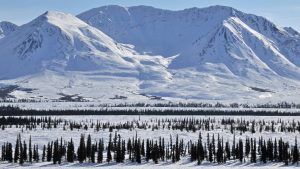
The Taiga, also known as the Boreal Forest, is the largest biome on Earth, stretching across the northern latitudes. Dominated by towering conifers, it covers an expansive area that supports unique ecosystems and serves as a vital environmental resource.
The forest’s ability to endure extreme cold is a testament to its resilience, with flora and fauna adapting to thrive in one of the most challenging climates. This biome is crucial in maintaining ecological stability, particularly as a major carbon reservoir.
It also supports an intricate web of wildlife, including many species that migrate seasonally to this vast expanse. The Taiga’s rivers, wetlands, and lakes are vital sources of freshwater and are central to its ecological health.
Human activities such as logging and mining threaten the Taiga’s stability. However, its sheer size and ecological importance have prompted various conservation initiatives to safeguard its unique characteristics. As one of the planet’s key natural resources, the Taiga is indispensable to global environmental health.
Taiga Forest Details
| Category | Details |
| Forest Name | Taiga (Boreal Forest) |
| Location | Northern Hemisphere (Russia, Canada, Alaska, Scandinavia) |
| Area Covered | Approximately 17 million square kilometers |
| Significant Wildlife | Moose, lynx, wolves, brown bears, migratory birds |
| Special Features | Largest terrestrial biome with cold-tolerant conifers |
| Climate | Subarctic climate with long winters and short, mild summers |
| Vegetation Type | Coniferous trees like spruces, pines, and firs |
| Cultural Significance | Sustains Arctic Indigenous communities and their way of life |
| Economic Importance | Timber production and fur trapping |
| Threats | Logging, mining, wildfires, and permafrost thawing |
| Conservation Efforts | National parks and international climate agreements |
| Sustainability Programs | Sustainable forestry and wildlife protection initiatives |
| Tourism Potential | Winter tourism, wildlife viewing, and adventure activities |
| Unique Phenomena | Contains permafrost and vast wetland areas |
| Global Impact | Key in global carbon storage and climate regulation |
4. Valdivian Temperate Rainforest: A South American Jewel
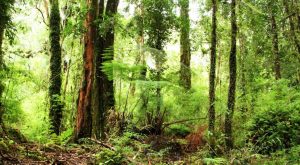
Image – Source
The Valdivian Temperate Rainforest, located in South America, is a unique forest ecosystem renowned for its rich biodiversity and ancient flora. This lush forest spans parts of Chile and Argentina, offering a rare example of a temperate rainforest outside the tropics.
Towering trees, moss-covered trunks, and a rich variety of understory plants characterize its dense greenery. The forest’s ecological importance lies in its role as a refuge for endangered species and its ability to regulate the local climate.
Its cool, moist environment supports unique wildlife, including species that are relics of prehistoric times. Additionally, the Valdivian forest is known for its stunning landscapes, from rugged mountains to serene river valleys, making it a site of immense natural beauty.
Conservation efforts have intensified to protect this forest from threats like logging and land conversion. Its preservation is vital not only for its biodiversity but also for the ecological balance of the region, ensuring its legacy for generations to come.
Valdivian Temperate Rainforest Details
| Category | Details |
| Forest Name | Valdivian Temperate Rainforest |
| Location | Located in southern Chile and western Argentina, near the Pacific coast |
| Area Covered | Spans approximately 248,100 square kilometers across Chile and Argentina |
| Significant Wildlife | Includes pumas, pudús (world’s smallest deer), Darwin’s frogs, and Magellanic woodpeckers |
| Special Features | Rare temperate rainforest with many ancient species, including the endangered alerce tree |
| Climate | Cool and humid with temperatures ranging from 4°C (39°F) to 16°C (61°F) throughout the year |
| Vegetation Type | Evergreen trees like coihue and alerce, mosses, ferns, and unique lichens |
| Cultural Significance | Integral to Indigenous Mapuche culture and traditions, including sustainable use of resources |
| Economic Importance | Contributes to eco-tourism, sustainable forestry, and niche agriculture products |
| Threats | Facing deforestation, introduction of invasive species, and agricultural expansion |
| Conservation Efforts | Supported by national parks, biosphere reserves, and global reforestation initiatives |
| Sustainability Programs | Focused on eco-tourism, controlled logging, and conservation education |
| Tourism Potential | Offers hiking, bird-watching, and exploration of ancient forests and cultural heritage sites |
| Unique Phenomena | Features some of the oldest tree species, including the 3,000-year-old alerce tree |
| Global Impact | Plays a key role in maintaining biodiversity and regulating South American water cycles |
5. Sundarbans Mangrove Forest: A Coastal Wonder
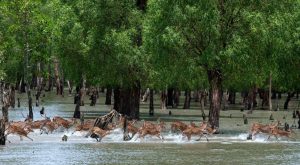
Image – Source
The Sundarbans Mangrove Forest, straddling the border of India and Bangladesh, is the largest tidal halophytic mangrove forest in the world and the biggest forest in India. This iconic coastal ecosystem is renowned for its dense mangrove vegetation and intricate network of rivers, creeks, and estuaries.
It is a vital habitat for the Bengal tiger, one of the most charismatic and endangered species on the planet. The forest’s ecological importance extends beyond its unique biodiversity. It acts as a natural shield against cyclones and storm surges, protecting coastal communities from severe weather impacts.
The Sundarbans also plays a crucial role in maintaining water quality by filtering pollutants and supporting fisheries that sustain local livelihoods.
Conservation initiatives focus on mitigating threats like rising sea levels, habitat destruction, and illegal poaching. The Sundarbans’ preservation is critical not only for the survival of its remarkable wildlife but also for ensuring the sustainability of the region’s coastal and marine ecosystems.
Sundarbans Mangrove Forest Details
| Category | Details |
| Forest Name | Sundarbans Mangrove Forest |
| Location | Located in the delta region of the Ganges, Brahmaputra, and Meghna rivers in India and Bangladesh |
| Area Covered | Spans approximately 10,277 square kilometers across India and Bangladesh |
| Significant Wildlife | Includes Bengal tigers, estuarine crocodiles, spotted deer, and mudskippers |
| Special Features | World’s largest mangrove forest with an intricate tidal river network |
| Climate | Tropical and humid with temperatures ranging from 20°C (68°F) to 35°C (95°F) |
| Vegetation Type | Dense mangroves, including Sundari and Nypa palm species |
| Cultural Significance | Revered in local folklore and integral to the livelihood of coastal communities |
| Economic Importance | Supports fishing, honey collection, and tourism industries |
| Threats | Threatened by rising sea levels, illegal logging, and poaching |
| Conservation Efforts | Protected under UNESCO World Heritage status and government-led preservation programs |
| Sustainability Programs | Focused on mangrove restoration, community-based conservation, and disaster risk reduction |
| Tourism Potential | Known for eco-tours, tiger safaris, and river cruises through mangrove creeks |
| Unique Phenomena | Witnesses daily tidal phenomena and acts as a natural cyclone barrier |
| Global Impact | Critical for coastal protection, carbon storage, and global biodiversity |
6. New Guinea Rainforest: The Pacific’s Hidden Treasure

Image – Source
The New Guinea Rainforest, located on the island of New Guinea, is a tropical wonder that holds the title of the third-largest rainforest globally. Renowned for its untouched biodiversity, it is home to countless species of plants and animals, many of which are found nowhere else on Earth.
The forest’s towering canopy, sprawling mangroves, and unique montane regions create an environment that supports life in extraordinary forms.
This rainforest is also significant for its cultural richness, with Indigenous communities maintaining traditional ways of life deeply intertwined with the forest. Its rivers, which meander through dense vegetation, provide critical water sources for both wildlife and human populations.
The New Guinea Rainforest faces threats from logging, mining, and agricultural expansion. However, its ecological importance has increased efforts to protect its delicate ecosystems through sustainable practices and global conservation initiatives.
New Guinea Rainforest Details
| Category | Details |
| Forest Name | New Guinea Rainforest |
| Location | Covers the island of New Guinea, shared by Indonesia and Papua New Guinea |
| Area Covered | Approximately 786,000 square kilometers |
| Significant Wildlife | Tree kangaroos, birds of paradise, cassowaries, and saltwater crocodiles |
| Special Features | Houses over 5% of the world’s biodiversity, with many endemic species |
| Climate | Tropical with temperatures ranging from 24°C (75°F) to 30°C (86°F) year-round |
| Vegetation Type | Dense lowland forests, montane forests, and coastal mangroves |
| Cultural Significance | Integral to the lives of Indigenous tribes, preserving centuries-old traditions |
| Economic Importance | Supports logging, mining, and agriculture, along with eco-tourism |
| Threats | Deforestation, mining operations, and oil palm plantations |
| Conservation Efforts | Initiatives by global organizations and local governments to establish protected areas |
| Sustainability Programs | Focused on eco-tourism and sustainable resource extraction |
| Tourism Potential | Offers trekking, bird watching, and cultural exchanges with Indigenous tribes |
| Unique Phenomena | Contains the world’s largest intact tropical island forest |
| Global Impact | Vital for regional climate regulation and global biodiversity conservation |
7. Daintree Rainforest: The Oldest Living Rainforest
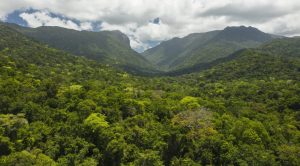
Image – Source
The Daintree Rainforest, located in Queensland, Australia, is one of the world’s most ancient ecosystems, dating back over 180 million years. This forest is a living museum of plant and animal life, showcasing species that have survived unchanged for millennia.
Its dense canopy, vibrant wildlife, and lush river systems create an unparalleled ecological paradise. As the oldest tropical rainforest on Earth, the Daintree is home to a remarkable variety of species, many of which are endemic.
The forest’s landscape combines rugged mountains, flowing rivers, and coastal fringes, offering habitats to creatures ranging from the elusive cassowary to delicate tree frogs.
Conservation efforts in the Daintree focus on maintaining its unique biodiversity and balancing human activities with ecological preservation.
With its extraordinary natural beauty, the Daintree continues to attract global attention as a prime destination for eco-tourism and a symbol of ancient natural heritage.
Daintree Rainforest Details
| Category | Details |
| Forest Name | Daintree Rainforest |
| Location | Located in Queensland, Australia, near the northeastern coast |
| Area Covered | It spans approximately 1,200 square kilometers |
| Significant Wildlife | Cassowaries, Boyd’s forest dragons, Bennett’s tree kangaroos, and Ulysses butterflies |
| Special Features | Oldest tropical rainforest in the world, dating back 180 million years |
| Climate | Tropical with temperatures between 23°C (73°F) and 31°C (88°F) |
| Vegetation Type | Dense tropical rainforest with ancient ferns, palms, and epiphytes |
| Cultural Significance | Sacred to the Kuku Yalanji, Indigenous people |
| Economic Importance | Eco-tourism, conservation-based industries, and sustainable agriculture |
| Threats | Habitat fragmentation, invasive species, and climate change |
| Conservation Efforts | World Heritage status, government-protected areas, and local eco-initiatives |
| Sustainability Programs | Focused on eco-friendly tourism and habitat restoration |
| Tourism Potential | Renowned for river cruises, hiking trails, and canopy tours |
| Unique Phenomena | Home to rare ancient plants like the Idiot Fruit (Idiospermum Australians) |
| Global Impact | Represents one of the most significant biodiversity hotspots globally |
8. Tongass National Forest: America’s Largest Temperate Rainforest
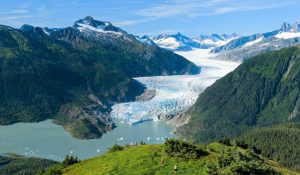
Image – Source
The Tongass National Forest, located in southeastern Alaska, USA, stands as the world’s largest temperate rainforest and one of the most ecologically significant regions in North America.
Spanning a diverse landscape of ancient old-growth forests, fjords, and majestic glaciers, it supports an intricate web of life. It provides essential habitats for species like grizzly bears, bald eagles, and humpback whales.
This forest is not only an ecological treasure but also a cultural cornerstone, deeply rooted in the traditions of Indigenous communities such as the Tlingit, Haida, and Tsimshian peoples.
Its towering trees, some over 800 years old, play a crucial role in sequestering carbon, underscoring its importance in combating climate change.
The Tongass also contributes significantly to Alaska’s scenic allure, with its dramatic landscapes attracting eco-tourists and adventure seekers from around the globe.
Despite its grandeur, the Tongass faces considerable threats from human activities such as logging and infrastructure development, as well as the growing impacts of climate change.
Conservation initiatives are now focused on sustainable forest management and eco-tourism, ensuring that this pristine wilderness remains a vital resource for both the environment and future generations.
Tongass National Forest Details
| Category | Details |
| Forest Name | Tongass National Forest |
| Location | Located in southeastern Alaska, United States |
| Area Covered | Spans approximately 68,000 square kilometers |
| Significant Wildlife | Grizzly bears, bald eagles, Sitka black-tailed deer, and humpback whales |
| Special Features | Largest temperate rainforest globally, with ancient old-growth trees |
| Climate | Cool and wet maritime climate with temperatures ranging from -1°C (30°F) to 15°C (59°F) |
| Vegetation Type | Old-growth coniferous trees, including Sitka spruce and western hemlock |
| Cultural Significance | Home to Indigenous Tlingit, Haida, and Tsimshian communities |
| Economic Importance | Supports fishing, tourism, and limited timber industries |
| Threats | Logging, road construction, and impacts of global warming |
| Conservation Efforts | Includes national protections, sustainable forest management programs |
| Sustainability Programs | Focused on eco-tourism and reforestation efforts |
| Tourism Potential | Popular for wildlife viewing, glacier tours, and scenic hiking |
| Unique Phenomena | Features dramatic glacial landscapes and pristine fjords |
| Global Impact | Plays a significant role in global carbon sequestration and biodiversity |
9. Great Bear Rainforest: Canada’s Coastal Temperate Jewel
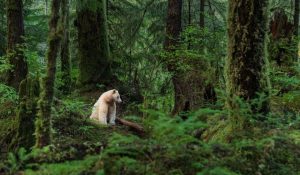
Image – Source
The Great Bear Rainforest, located along British Columbia’s rugged coast, is a pristine natural haven renowned for its extraordinary beauty and ecological significance. This forest spans lush landscapes, home to ancient conifers and moss-laden understories that create a vibrant ecosystem supporting diverse flora and fauna.
Its breathtaking fjords and clear rivers further enhance its allure, drawing nature enthusiasts and conservationists alike. The forest is central to the cultural heritage of the Indigenous First Nations communities, who have practised sustainable living in harmony with this environment for centuries.
Its expansive wilderness is pivotal in biodiversity conservation, offering a haven for species uniquely adapted to this temperate rainforest environment.
Efforts to preserve the Great Bear Rainforest focus on sustainable development and respecting Indigenous rights. This forest has become a global model for balancing ecological preservation with human activity, ensuring its legacy remains intact for generations to come.
Great Bear Rainforest Details
| Category | Details |
| Forest Name | Great Bear Rainforest |
| Location | Located on the central and northern coast of British Columbia, Canada |
| Area Covered | Spans approximately 64,000 square kilometers |
| Significant Wildlife | Includes Kermode bears (Spirit Bears), wolves, grizzly bears, and humpback whales |
| Special Features | One of the largest intact temperate rainforests globally, home to the rare Spirit Bear |
| Climate | Cool and temperate with high rainfall, temperatures ranging from 5°C (41°F) to 20°C (68°F) |
| Vegetation Type | Dense coniferous trees, moss-covered forest floors, and coastal wetlands |
| Cultural Significance | Sacred to Indigenous First Nations communities with centuries of stewardship |
| Economic Importance | Supports eco-tourism, sustainable fishing, and Indigenous-led industries |
| Threats | Logging, industrial development, and climate-related changes |
| Conservation Efforts | Protected under the Great Bear Rainforest Agreement and local Indigenous stewardship |
| Sustainability Programs | Indigenous-driven conservation and sustainable resource management |
| Tourism Potential | Offers eco-tourism activities like Spirit Bear spotting, kayaking, and wildlife tours |
| Unique Phenomena | Home to one of the rarest bear species, the white Kermode (Spirit Bear) |
| Global Impact | Critical for carbon storage, biodiversity, and cultural preservation globally |
10. Bosawas Biosphere Reserve: Central America’s Untamed Wilderness

Image – Source
The Bosawas Biosphere Reserve, nestled in Nicaragua, is one of the largest tropical rainforests in Central America. Known as the “lungs of Central America,” this forest is a sanctuary of untouched natural beauty, featuring dense vegetation, winding rivers, and remote mountainous terrains.
Its isolation has allowed countless species to thrive in a habitat largely free from human intervention. The reserve is a lifeline for local Indigenous communities, whose cultural traditions and livelihoods are deeply connected to the forest.
These communities have played a significant role in preserving Bosawas’ delicate ecosystems. The reserve is also critical for maintaining the regional water cycle, as its vast canopy influences local rainfall patterns and supports neighbouring ecosystems.
Despite its isolation, the Bosawas Biosphere Reserve faces increasing pressures from illegal logging, mining, and agricultural encroachment.
Conservation initiatives focus on empowering Indigenous stewardship and protecting this rich habitat from further degradation while ensuring its ecological benefits extend to future generations.
Bosawas Biosphere Reserve Details
| Category | Details |
| Forest Name | Bosawas Biosphere Reserve |
| Location | Located in northern Nicaragua, near the border with Honduras |
| Area Covered | It spans approximately 20,000 square kilometers |
| Significant Wildlife | Includes jaguars, tapirs, harpy eagles, and poison dart frogs |
| Special Features | Largest rainforest in Central America, with remote, unexplored ecosystems |
| Climate | Tropical with temperatures ranging from 24°C (75°F) to 28°C (82°F) |
| Vegetation Type | Dense lowland rainforest with towering trees, orchids, and ferns |
| Cultural Significance | Inhabited by Indigenous groups like the Mayangna and Miskito people |
| Economic Importance | Limited to sustainable activities like eco-tourism and small-scale farming |
| Threats | Faces illegal deforestation, cattle ranching, and gold mining |
| Conservation Efforts | UNESCO biosphere designation and locally driven forest protection programs |
| Sustainability Programs | Indigenous-led initiatives for sustainable resource use and eco-tourism |
| Tourism Potential | Opportunities for remote eco-tourism, wildlife observation, and cultural experiences |
| Unique Phenomena | Home to rare, unexplored regions with endemic plant and animal species |
| Global Impact | Essential for regional water systems and carbon storage in Central America |
Conclusion
The world’s biggest forests are more than just awe-inspiring landscapes—they are the Earth’s lungs, guardians of biodiversity, and cradles of cultural heritage.
From the Amazon’s unmatched scale to the mysterious depths of the Congo and the ancient majesty of the Daintree, these forests sustain life in ways we often take for granted.
Yet, these natural wonders face growing threats from deforestation, climate change, and human activities. Preserving them isn’t just about saving trees. It’s about securing a future for all species, including ourselves.
By understanding their significance and supporting global conservation efforts, we can ensure these magnificent forests continue to thrive and inspire for generations to come. The journey to protect them begins with awareness and action.
FAQs About Top 10 World Biggest Forest
What is the largest forest in the world?
The Amazon Rainforest is the largest forest in the world, covering approximately 5.5 million square kilometers across South America. It is renowned for its unmatched biodiversity and crucial role in global oxygen production and carbon storage.
How does the Congo Basin contribute to global ecology?
The Congo Basin is a significant carbon sink, absorbing large amounts of CO2 and mitigating climate change. It supports unique biodiversity and provides water resources that sustain millions of people and wildlife across Africa.
Why is the Taiga called the largest biome?
The Taiga, or Boreal Forest, spans over 17 million square kilometers across the Northern Hemisphere. It is the largest terrestrial biome, dominated by cold-tolerant coniferous trees and vital for carbon sequestration.
What makes the Sundarbans unique among forests?
The Sundarbans is the largest tidal halophytic mangrove forest, straddling India and Bangladesh. It is known for its intricate water networks and as a critical habitat for the endangered Bengal tiger.
How does deforestation affect the Amazon Rainforest?
Deforestation in the Amazon leads to habitat destruction, loss of biodiversity, and increased carbon emissions. It disrupts global climate patterns and threatens Indigenous communities reliant on the forest.
Which forest is the most biodiverse?
The Amazon Rainforest is the most biodiverse forest, home to millions of plant, animal, and insect species. Its rich ecosystems are unparalleled, making it vital for global biodiversity conservation.
Are there forests older than the Amazon?
Yes, the Daintree Rainforest in Australia is older than the Amazon, dating back over 180 million years. It is considered the world’s oldest tropical rainforest, rich in ancient flora and fauna.







